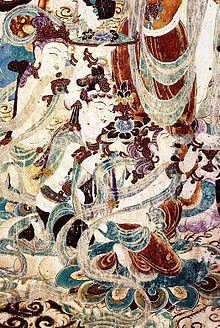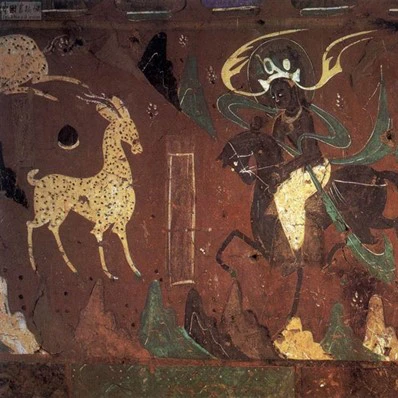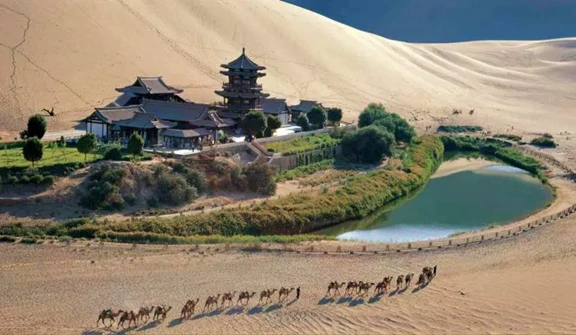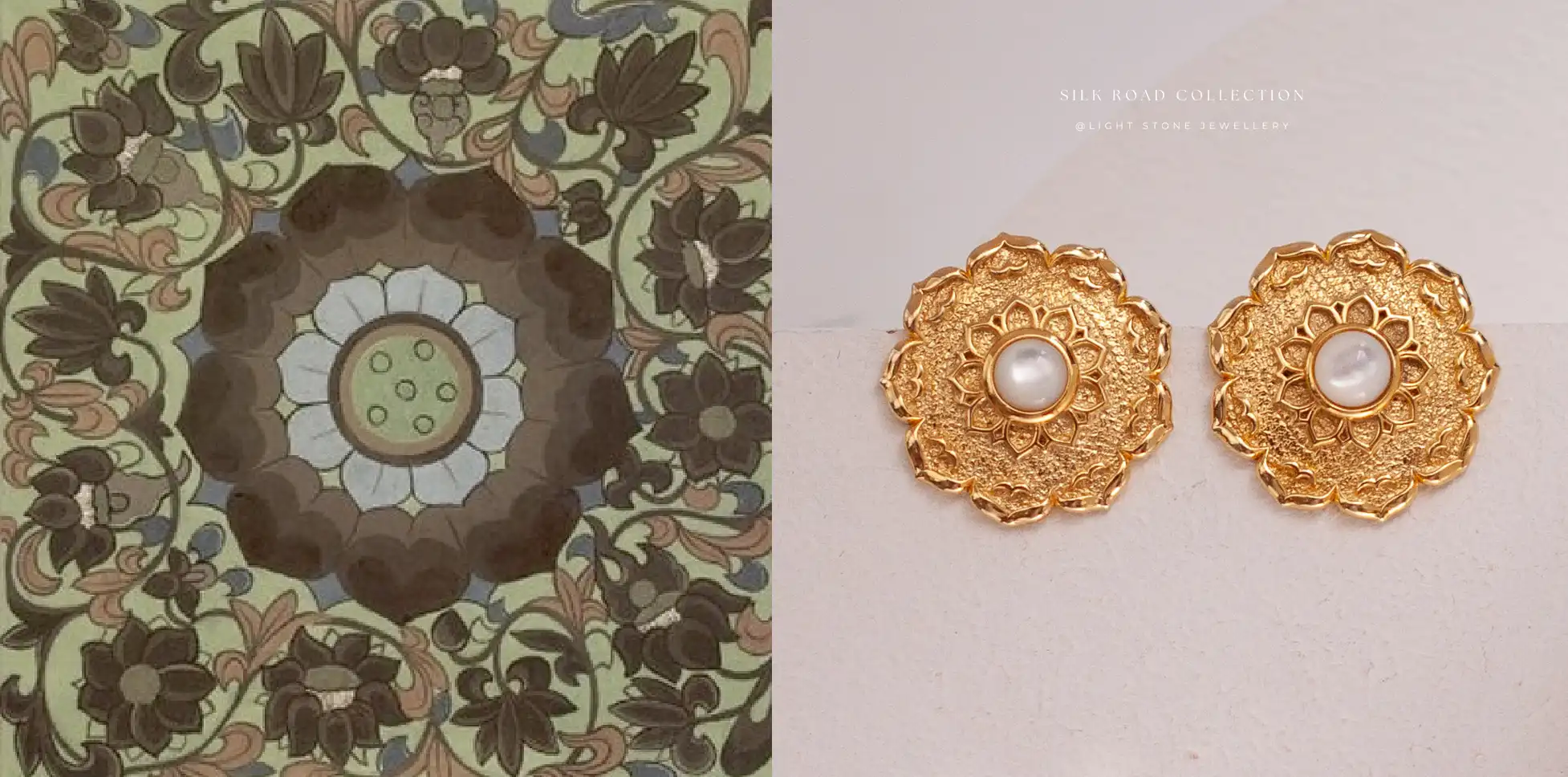Dunhuang, Where Cultures Converge
Dunhuang was established as a frontier garrison by Emperor Wudi of the Han dynasty in 111 BCE to guard against northern invasions. Over centuries, it transformed into a key node along the Silk Road—a trade route not only of goods but of belief systems, artistic traditions, and cultural practices.
Situated at the edge of the Gobi Desert, Dunhuang became an oasis of cross-cultural exchange. Indian Buddhism, Persian iconography, Central Asian narrative techniques, and Chinese imperial aesthetics all converged here. Among the many expressions of this confluence, one stands above all: the Mogao Caves.
A Thousand Years of Painted Devotion
Beginning in the 4th century CE, Chinese Buddhists carved caves into the sandstone cliffs near Dunhuang. These were not only spaces of meditation, but canvases for spiritual memory. Over 1,000 years, more than 500 caves were filled with murals, sculptures, and devotional inscriptions—totaling over 50,000 square meters of painted surface.
Early murals drew heavily from Indian and Central Asian styles. Later periods developed a distinctly Dunhuang aesthetic: one that integrated flowing line work, stylized lotus motifs, radiating mandalas, celestial dancers, and visual storytelling in narrative panels. Dunhuang art is not fixed in style—it is rhythmic, layered, and deeply syncretic.
From Wall to Ornament: Our Design Response
At Light Stone, we approach Dunhuang not as a closed archive, but as a living language. Our Silk Road Collection translates some of the visual strategies of Dunhuang—its symmetry, its blessings, its gesture-based ornament—into jewelry that can be worn, touched, and carried.
We collaborate with artisans to interpret these forms into contemporary silhouettes. Each piece is a quiet echo of that world: not a replica, but a continuation.
To explore how these visual traditions inspired our work,
visit the Silk Road Collection , where each piece carries a fragment of Dunhuang’s quiet rhythm.





